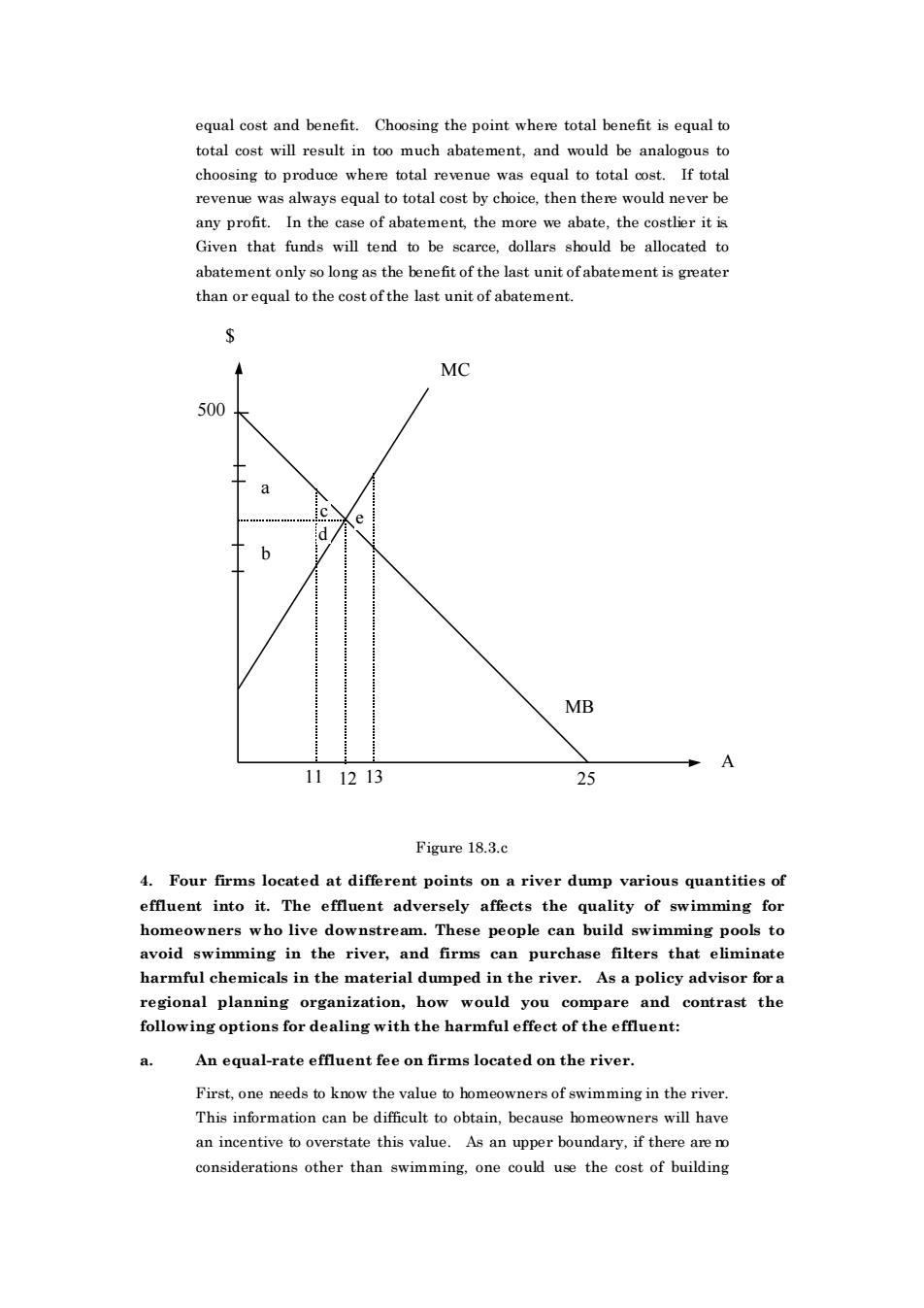正在加载图片...

equal cost and benefit.Choosing the point where total benefit is equal to total cost will result in too much abatement,and would be analogousto choosing to produe where total revenue was equal to total cost. If tota revenue was always equal to total cost by choice,then there would never be any profit.In the case of abatement,the more we abate,the costlier it is Given that funds will tend to be scarce,dollars should be allocated to abatement the benefit of the last unit of abatement isater than or equal to the cost of the last unit of abatemen MC 500 a 6 MB A 111213 25 Figure18.3.c 4.Four firms located at different points on a river dump various quantities of efuent into it.The effuent adversely affects the quality of swimming for homeowners who live downstream.These people can build swimming pools to avoid swimming in the river,and firms can purchase filters that eliminate harmful chemicals in the material dumped in the river.As a policy advisor for a regional planning organization.how would you compare and contrast the following options for dealing with the harmful effect of the effluent: An equal-rate effluent fee on firms located on the river. First,one neds tokow the valueto homeowners of swimming in the river This information can be difficult to obtain,because homeowners will have an incentive to overstate this value.As an upper boundary,if there are m considerations other than swimming.one could use the cost of building equal cost and benefit. Choosing the point where total benefit is equal to total cost will result in too much abatement, and would be analogous to choosing to produce where total revenue was equal to total cost. If total revenue was always equal to total cost by choice, then there would never be any profit. In the case of abatement, the more we abate, the costlier it is. Given that funds will tend to be scarce, dollars should be allocated to abatement only so long as the benefit of the last unit of abatement is greater than or equal to the cost of the last unit of abatement. $ A 11 12 13 25 500 MC MB a b c d e Figure 18.3.c 4. Four firms located at different points on a river dump various quantities of effluent into it. The effluent adversely affects the quality of swimming for homeowners who live downstream. These people can build swimming pools to avoid swimming in the river, and firms can purchase filters that eliminate harmful chemicals in the material dumped in the river. As a policy advisor for a regional planning organization, how would you compare and contrast the following options for dealing with the harmful effect of the effluent: a. An equal-rate effluent fee on firms located on the river. First, one needs to know the value to homeowners of swimming in the river. This information can be difficult to obtain, because homeowners will have an incentive to overstate this value. As an upper boundary, if there are no considerations other than swimming, one could use the cost of building